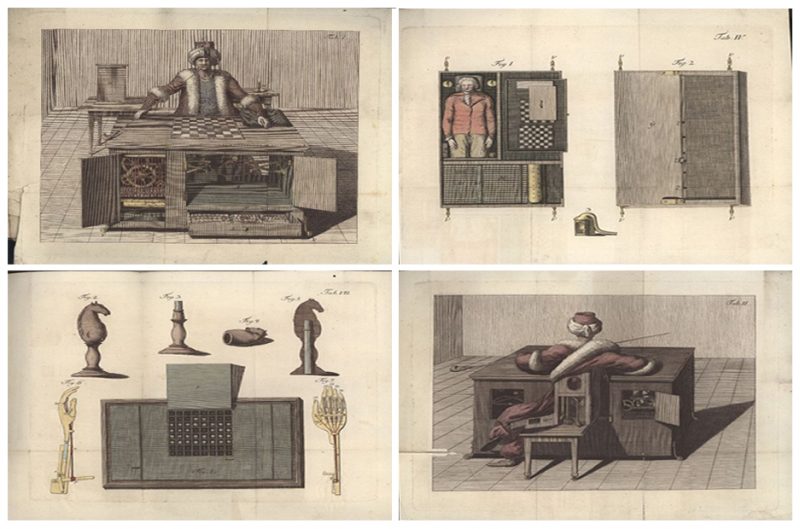The Turk, also known as the Mechanical Turk or Automaton Chess Player was a fake chess-playing machine constructed in the late 18th century. From 1770 until its destruction by fire in 1854 it was exhibited by various owners as an automaton, though it was exposed in the early 1820s as an elaborate hoax. Constructed and unveiled in 1770 by Wolfgang von Kempelen (1734–1804) to impress the Empress Maria Theresa of Austria, the mechanism appeared to be able to play a strong game of chess against a human opponent, as well as perform the knight’s tour, a puzzle that requires the player to move a knight to occupy every square of a chessboard exactly once.
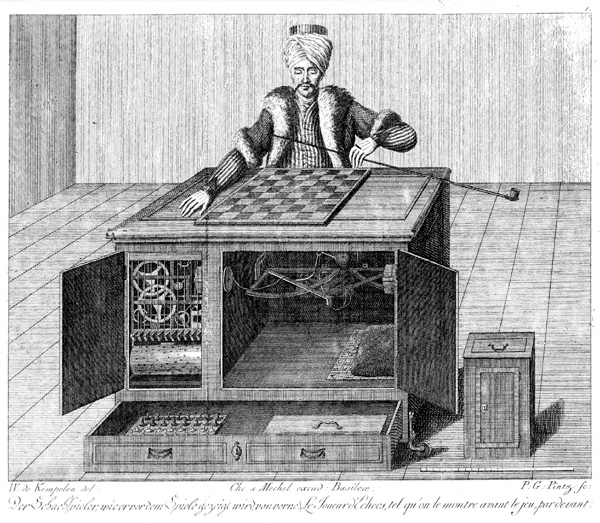
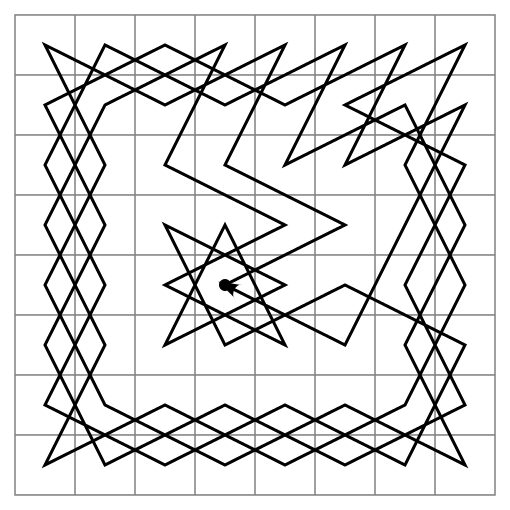
The Turk was, in fact, a mechanical illusion. A concealed grandmaster controlled the Turk’s movements and followed the game’s action through a clever arrangement of magnets and strings. With a skilled operator, the Turk won most of the games played during its demonstrations around Europe and the Americas for nearly 84 years, playing and defeating many challengers including statesmen such as Napoleon Bonaparte and Benjamin Franklin. The operators within the mechanism during Kempelen’s original tour remain a mystery. The device was later purchased in 1804 and exhibited by Johann Nepomuk Mälzel. The chess masters who secretly operated it included Johann Allgaier, Boncourt, Aaron Alexandre, William Lewis, Jacques Mouret, and William Schlumberger.
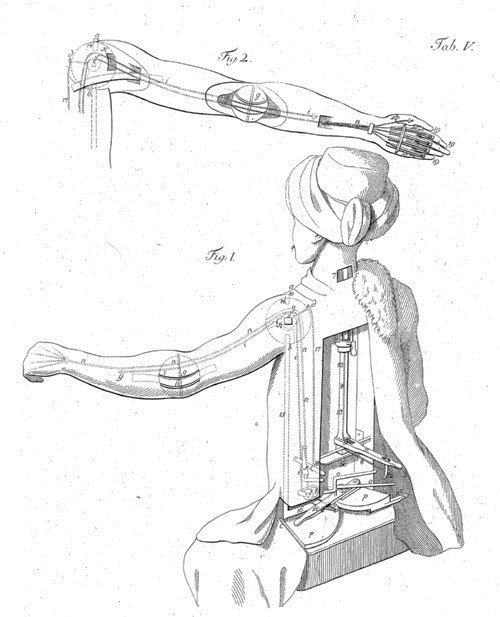
Kempelen was inspired to build the Turk following his attendance at the court of Maria Theresa of Austria at Schönbrunn Palace, where François Pelletier was performing an illusion act. An exchange afterward resulted in Kempelen promising to return to the Palace with an invention that would top the illusions. The result of the challenge was the Automaton Chess-player, known in modern times as the Turk. The machine consisted of a life-sized model of a human head and torso, with a black beard and grey eyes, and dressed in Turkish robes and a turban – “the traditional costume”. Placed on the top of the cabinet was a chessboard, which measured eighteen inches square. The front of the cabinet consisted of three doors, an opening, and a drawer, which could be opened to reveal a red and white ivory chess set.
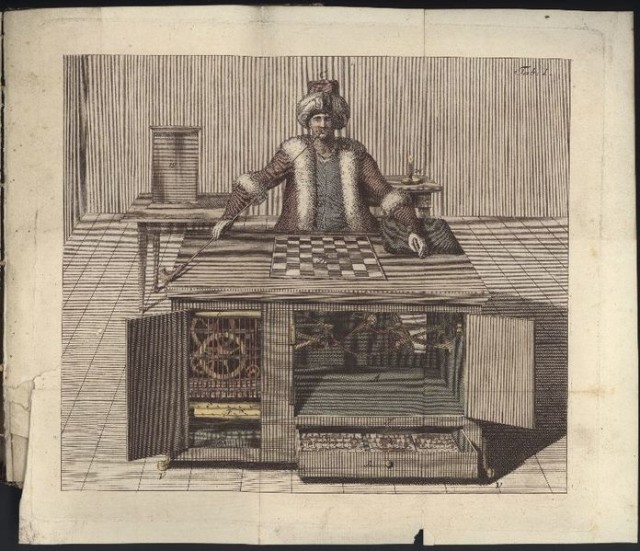
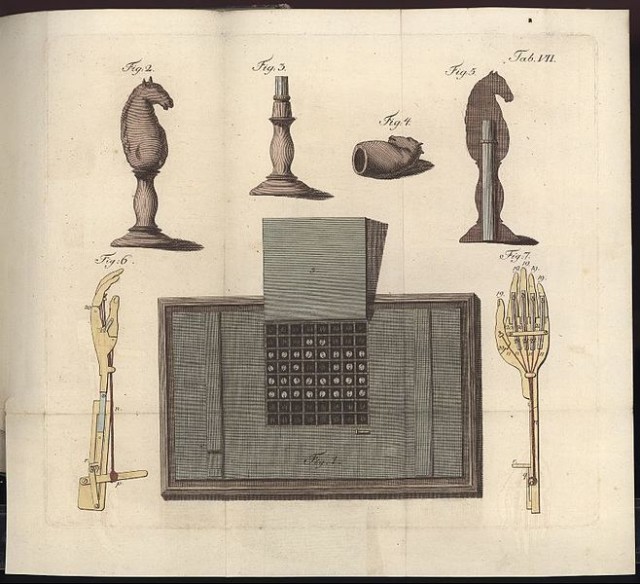
The Turk made its debut in 1770 at Schönbrunn Palace, about six months after Pelletier’s act. Kempelen addressed the court, presenting what he had built, and began the demonstration of the machine and its parts. With every showing of the Turk, Kempelen began by opening the doors and drawers of the cabinet, allowing members of the audience to inspect the machine. Following this display, Kempelen would announce that the machine was ready for a challenger. The first person to play against the Turk was Count Ludwig von Cobenzl, an Austrian courtier at the palace. Along with other challengers that day, he was quickly defeated, with observers of the match stating that the machine played aggressively, and typically beat its opponents within thirty minutes.

Following the word of its debut, interest in the machine grew across Europe. Kempelen, however, was more interested in his other projects and avoided exhibiting the Turk, often lying about the machine’s repair status to prospective challengers. Von Windisch wrote at one point that Kempelen “refused the entreaties of his friends, and a crowd of curious persons from all countries, the satisfaction of seeing this far-famed machine”
In 1781, Kempelen was ordered by Emperor Joseph II to reconstruct the Turk and deliver it to Vienna for a state visit from Grand Duke Paul of Russia and his wife. The appearance was so successful that Grand Duke Paul suggested a tour of Europe for the Turk, a request to which Kempelen agreed. The Turk began its European tour in 1783, beginning with an appearance in France in April. Upon arrival in Paris in May 1783, it was displayed to the public and played a variety of opponents, including a lawyer named Mr. Bernard who was a second rank in chess ability. The machine played many of the most skilled players, often losing. Following his tour of Paris, Kempelen moved the Turk to London, where it was exhibited daily for five shillings. After a year in London, Kempelen and the Turk travelled to Leipzig, stopping in various European cities along the way.
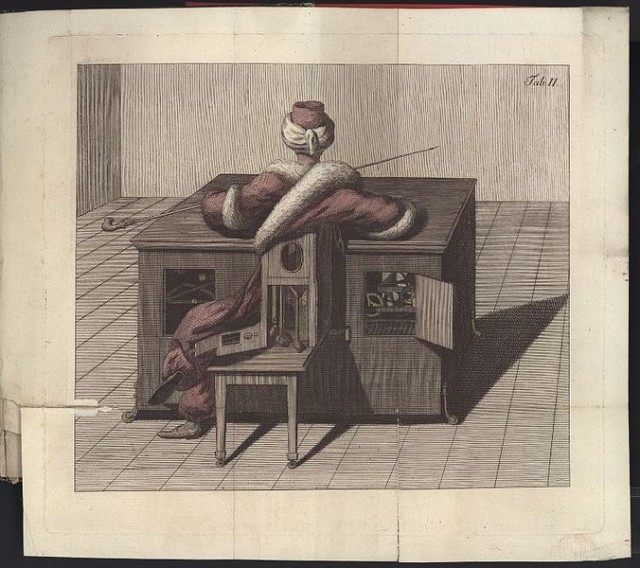
Following the death of Kempelen, the Turk remained unexhibited until some time before 1804 when Kempelen’s son decided to sell it to Johann Nepomuk Mälzel, a Bavarian musician with an interest in various machines and devices. Mälzel, whose successes included patenting a form of metronome, had tried to purchase the Turk once before, before Kempelen’s death. The original attempt had failed, owing to Kempelen’s asking price of 20,000 francs; Kempelen’s son sold the machine to Mälzel for half this sum.
In 1809, Napoleon I of France arrived at Schönbrunn Palace to play the Turk. According to an eyewitness report, Mälzel took responsibility for the construction of the machine while preparing the game, and the Turk (Johann Baptist Allgaier) saluted Napoleon before the start of the match. The details of the match have been published over the years in numerous accounts.
In 1811, Mälzel brought the Turk to Milan for a performance with Eugène de Beauharnais, the Prince of Venice and Viceroy of Italy. Beauharnais enjoyed the machine so much that he offered to purchase it from Mälzel. After some serious bargaining, Beauharnais acquired the Turk for 30,000 francs – three times what Mälzel had paid – and kept it for four years. In 1815, Mälzel returned to Beauharnais in Munich and asked to buy the Turk back. After the repurchase, Mälzel brought the Turk back to Paris. Mälzel stayed in France with the machine until 1818, when he moved to London and held a number of performances.
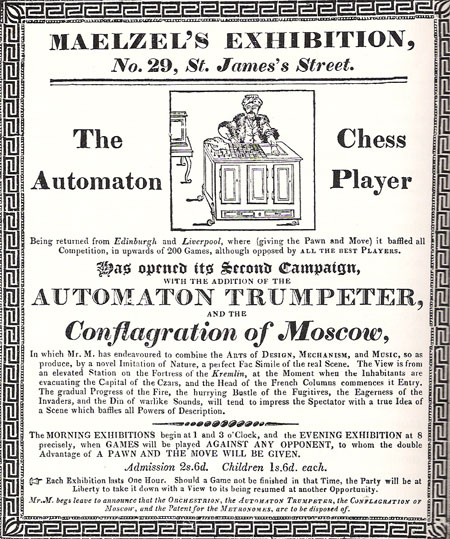
The appearances of the Turk were profitable for Mälzel, and he continued by taking it and his other machines to the United States. Mälzel continued with exhibitions around the United States until 1828. Mälzel eventually took the Turk on his second tour to Havana, Cuba. In Cuba, Schlumberger died of yellow fever, leaving Mälzel without a director for his machine. Dejected, Mälzel died at sea in 1838 at age 66 during his return trip, leaving his machinery with the ship captain.
![Other parts of the machinery allowed for a clockwork-type sound to be played when the Turk made a move, further adding to the machinery illusion, and for the Turk to make various facial expressions.[17] A voice box was added following the Turk’s acquisition by Mälzel, allowing the machine to say “Échec!” (French for “check”) during matches. source](https://www.thevintagenews.com/wp-content/uploads/sites/65/2016/04/3-7-640x589.jpg)
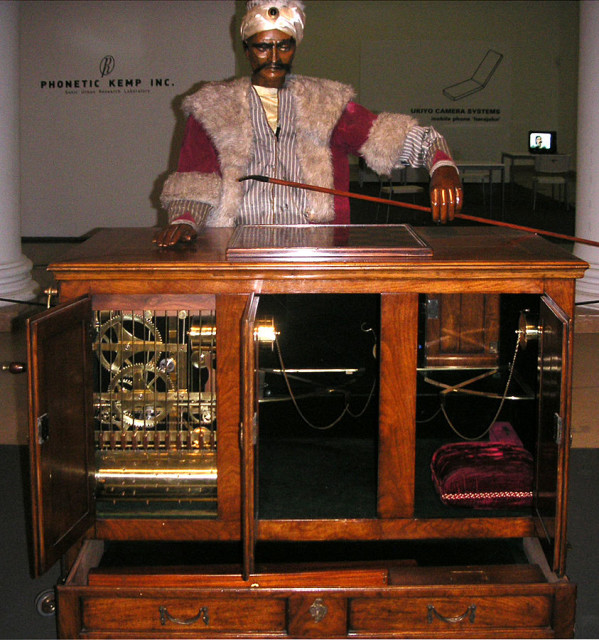
Owing to the Turk’s popularity and mystery, its construction inspired a number of inventions and imitations. John Gaughan, an American manufacturer of equipment for magicians based in Los Angeles, spent $120,000 building his own version of Kempelen’s machine over a five-year period from 1984. The machine uses the original chessboard, which was stored separately from the original Turk and was not destroyed in the fire. The first public display of Gaughan’s Turk was in November 1989 at a history of magic conference. The machine was presented much as Kempelen presented the original, except that the opponent was replaced by a computer running a chess program.
